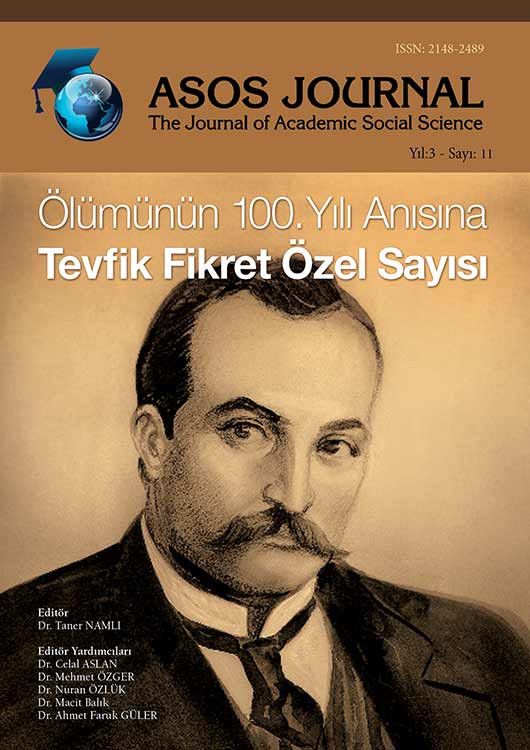Author :
Abstract
Hem ressam hem şair vasfıyla Servet-i Fünûn dönemine damgasını vuran, Türk edebiyatında üzerine en çok söz söylenen ve en çok tartışılan sanatçılardan biri Tevfik Fikret’tir. Şairin ressamlığı onun şiirlerindeki duyuşu ve bakışı da etkilemiştir kuşkusuz. Pitoresk endişe ile yaklaştığı şiirleri içinde, sözcüklerle görünür kıldığı portrelerinin ayrı bir yeri vardır. Bu çalışmada, Fikret’in Rübâb-ı Şikeste’de yer alan “Âveng-i Tesâvîr” başlığı altında bir araya getirdiği portre şiirlerden “Fuzûlî”, “Nedîm” ve “Nef’î” ele alınmıştır. Ayrıca Fikret’in
Keywords
Abstract
Tevfik Fikret, who left his marks on the Servet-i Fünûn period with both his painter and poet qualities, is one of the artists of Turkish Literature who is spoken and argued the most. The poet’s painting affected the look of his poems, undoubtedly. The portraits he made visible with his words have distinct places in his poems which he approached with picturesque concern. In this study, Fuzûlî, Nedîm and Nef’î are going to be dealt by means of the portrait poems which are gathered under the title of “Âveng-i Tesâvîr” in Rübâb-ı Şikeste by Fikret. The reasons why Fikret chose these three top portraits of the Divan tradition, the way he perceived these poets and the values he attributed to the poets being talked of as an image are going to be questioned. While Fikret describes Fuzûlî as the image of “morbid love” suffering from love, with sorrow, having difficulty and trouble, introverted; he imagines Nedîm as the image of “carnal love” which represents the youth who are lost in the pleas





